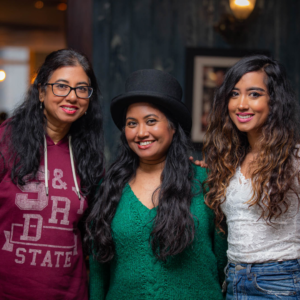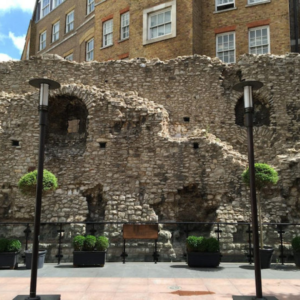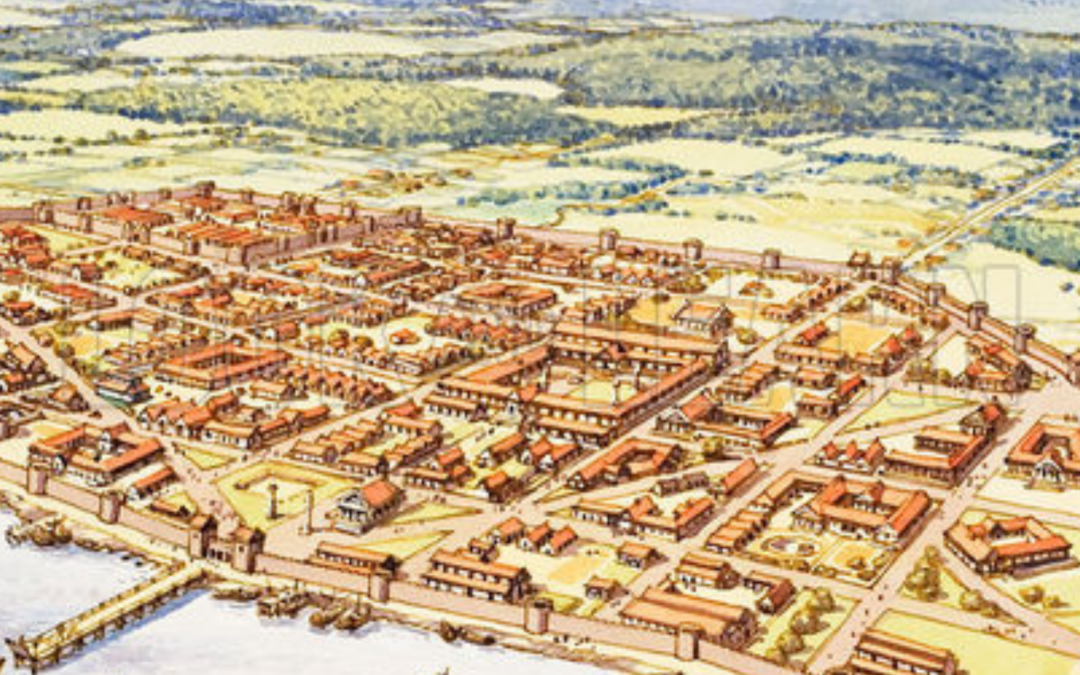We started our latest Beyond The Map Adventure greeted by the sounds of St Paul’s thunderous bells as we walked through Paternoster Square to gather with our latest cohort to explore the City of London from the Roman London era, at the Paternoster Pub, which soon erased the gloom typically associated with a damp Sunday morning.
Once again Benji was waiting, ready to welcome our Competition Winners and friends. Skins, our photographer joined us once again to not only capture our competition winners, but our ladies from Buckinghamshire and our Meetup friends.
 We met and greeted our competition winner Shamina and her lovely guests within the aptly named snug at the Paternoster Pub.
We met and greeted our competition winner Shamina and her lovely guests within the aptly named snug at the Paternoster Pub.
As this venue was also going to be our final resting point and having discarded unwanted items, safely protected by Emily, our community manager and part of our product development team, we duly set-off for Moorgate Tube Station, our City of London from Roman Times Self Guided Walk starting point.
En route our Meetup teams allocated roles and today’s map reader, leader and Google operator came into their own as newly formed friendships began before our eyes. The wonderful Lorrain and Claire making their second appearance on our London self guided walks in two weeks, it’s lovely to have our newly formed business venture being appreciated.
Why do we suggest these roles you may ask?! BTML Walks and Tours are constantly checked for road closures, and scaffolding items which may block part of the planned route, hence those roles coming into use, as we discovered within seconds of starting out from Moorgate Tube station.
As we set off we saw our path blocked by filming for a Netflix Marvel series and the unannounced film crew set about sealing off most of Moorgate. Although this may have hindered some of those initial observation clues, the day was certainly not ruined. Google being one’s saviour more than once!

Onward our various groups trekked, around corners and alleyways, many amazed to see the original Roman Wall that protected Londinium. For one of our Competition Winner’s amazement, it concealed an enclosed church garden with beautiful tulips in full bloom.
This was a wonderful surprise for this Competition Winner, who works nearby and never even knew this garden existed mere metres from their daily place of work, proving our promise that by embarking on a Beyond The Map adventure, you will visit hidden treasures not normally seen by passing commuters.
Top 5 Facts about Roman London
1. Londinium was founded by the Romans in AD 47 (or 47 CE) on the banks of the Thames roughly where the current square mile ‘City of London’ is located.
2. In AD 61 the native Iceni tribe, led by Queen Boudicca, rose up against the Romans. They burnt Londinium to the ground and killed 30,000 Londoners. The Iceni or Eceni were a Brittonic tribe of eastern Britain during the Iron Age and early Roman era.
Their territory included present-day Norfolk and parts of Suffolk and Cambridgeshire. In the Roman period, their capital was Venta Icenorum at modern-day Caistor St Edmund.
3. The Romans built many major structures in Londinium including temples, bathhouses, a basilica for meetings, and a governor’s palace. Around 200 AD, they built a defensive wall around the city called London Wall.
4. There is an original piece of the Roman Wall connected to the Museum of London, a 5 km (3 miles) long, 6 m (20 ft) high, and 2.5 m (8 ft 2 in) thick structure, that would have surrounded Londinium roughly 2,000 years ago.
 5. Emperor Hadrian visited in 122. The impressive public buildings from around this period may have been initially constructed in preparation for his visit or during the rebuilding which followed the “Hadrianic Fire”.
5. Emperor Hadrian visited in 122. The impressive public buildings from around this period may have been initially constructed in preparation for his visit or during the rebuilding which followed the “Hadrianic Fire”.
This fire, which archaeologists have discovered destroyed much of the city, is not recorded by any surviving source and seems to have occurred in a time of relative calm in Britain. It is for those reasons, it is generally assumed to have been accidental.
An extra hunt
So after nearly 2 hrs of walking and the smell of a Sunday roast waffling on a light breeze in a quiet street near St Paul’s, we were all intrigued to establish its origin as our appetites were beginning to stir. To our delight and surprise it was the residents of the St Paul’s clergy themselves!
Suddenly fully flocked priests emerged from the Dean triggered by yet more thunderous bell ringing, stirred by sounds, ready for their next service but the smell of that delicious rich gravy still lingered in the air. Thank goodness we only had a few hundred yards to go before making our way faithfully back to the Paternoster Pub so we could order our own!
12, 233 steps later, I got to sit down with a refreshing drink and rest my laurels whilst waiting for something to eat after a wonderful day exploring Roman London with great company.
If you wanted to really make your Self Guided City Walk a Roman affair, we recommend checking out The Museum of London, which is showcasing the history of London from well before the Romans themselves. The Museum holds a fabulous collection of artefacts dating from the time of Londinium from currency, jewellery, household goods to figures of worship and more, the Museum of London’s collection cannot be topped.
However, this walk is really about the City of London itself and its livery companies too.
What is a Livery Company?
There are 110 livery companies, comprising London’s ancient and modern trade associations and guilds, almost all of which are styled the ‘Worshipful Company of…’ their respective craft, trade or profession.
These livery companies play a significant part in the life of the City of London (i.e. the financial district and historic heart of the capital), not least by providing charitable-giving and networking opportunities. Liverymen retain voting rights for the senior civic offices, such as the Lord Mayor, Sheriffs and Corporation, its ancient municipal authority with extensive local government powers.
If you love the sound of this walk, you can book your City of London from Roman Times self guided city walk by going to: The City of London from Roman Times Self Guided Walk

